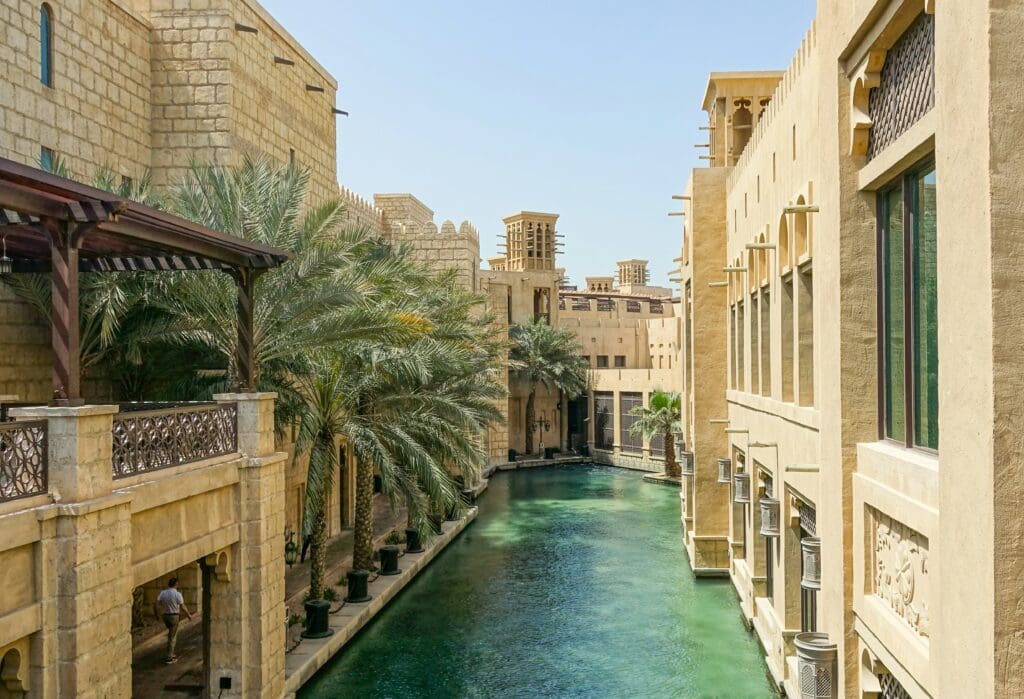Dubai
Country Name: United Arab Emirates (UAE)
Capital City: Abu Dhabi (Note: Dubai is the largest city in the UAE but not the capital)
Population: Approximately 3.5 million (2024 est.)
Official Language: Arabic
Currency: United Arab Emirates Dirham (AED)
Time Zone: Gulf Standard Time (GST), UTC +4




Diving Overview
Dubai offers a unique diving experience with its blend of artificial reefs, wrecks, and the occasional encounter with marine life in the Arabian Gulf. The city’s warm waters and easy access to dive sites make it an attractive destination for both novice and experienced divers.
- Number of Dive Sites: Over 10 notable sites
- Types of Diving: Wreck, reef, and artificial reefs
- Marine Biodiversity Highlights: Rays, small reef fish, and the occasional turtle
- Average Water Temperatures: 22-32°C (72-89°F)
- Visibility Range: 5-20 meters (16-65 feet)
Important Information
Optimal Dive Seasons
The best diving conditions in Dubai are typically from October to May when the temperatures are milder, and visibility is better.
Major Airports
Dubai International Airport (DXB) is the primary airport, with another option being Al Maktoum International Airport (DWC).
The Travel Tip
A 3mm wetsuit is usually sufficient for diving in Dubai’s warm waters, but consider a 5mm suit for cooler months or deeper dives.
Weather Patterns
Dubai has a desert climate with very hot summers and mild winters. Diving is most comfortable during the cooler months from October to May.
Internal Transportation
Dubai is well connected by metro, buses, taxis, and ride-sharing services. Car rentals are also a popular option for getting around the city.
Attractions
Major attractions include Burj Khalifa, Palm Jumeirah, Dubai Mall, the Dubai Desert Safari, and the historical district of Al Fahidi.
Top Dive Regions
Dubai offers a range of exciting and unique diving experiences, from exploring artificial reefs to encountering diverse marine life in the Arabian Gulf. Jumeirah Beach is popular for its artificial reefs and wrecks, providing exciting underwater adventures close to the city. Fujairah, located on the east coast, is renowned for its rich coral reefs and abundant marine life, including rays and turtles. For a more challenging experience, Musandam offers dramatic underwater landscapes with excellent visibility. Lastly, Sharm Rock is known for its vibrant coral gardens and diverse marine species, making it a favorite among divers of all levels.

Jumeirah Beach
Known for its artificial reefs and wrecks, offering diverse diving opportunities close to Dubai’s city center.

Fujairah
Located on the east coast, Fujairah offers vibrant coral reefs and a variety of marine life, including rays and turtles.

Musandam
Offers dramatic underwater landscapes and excellent visibility, perfect for adventurous divers.

Sharm Rock
Known for its colorful coral gardens and diverse marine species, Sharm Rock is ideal for divers of all levels.
Marine Life
Dubai’s marine environments, located in the Arabian Gulf, offer an exciting array of marine life. The artificial reefs and wrecks off Jumeirah Beach provide habitats for species like snappers, groupers, and barracudas. In Fujairah, along the east coast, divers can encounter vibrant coral reefs teeming with tropical fish, sea turtles, and rays. The waters of Musandam are known for their dramatic underwater landscapes, where large pelagic species, such as whale sharks and manta rays, can be spotted. Additionally, Dubai’s coastal waters host a variety of species, including moray eels, reef sharks, and nudibranchs, supported by nutrient-rich currents, making it a fascinating destination for marine biodiversity.
Common Species: Sea turtles, rays, reef sharks, moray eels, barracudas, groupers, nudibranchs, and various species of tropical fish.
Seasonal Highlights: Whale sharks and manta rays are often seen in the waters around Musandam, particularly from May to September, making it an excellent time for divers to explore these areas.



